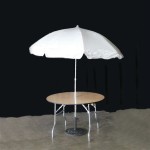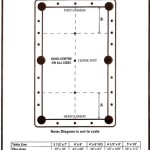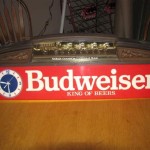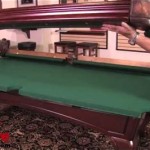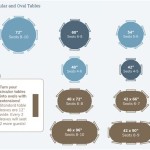Converting a Dining Room Table into a Pool Table: A Comprehensive Guide
The concept of transforming a standard dining room table into a functional and enjoyable pool table is appealing to many homeowners, particularly those with limited space or a desire for multi-functional furniture. While a complete conversion replicating a professional pool table is a complex undertaking, adaptations and modifications can create a playable and entertaining surface. This article will delineate the key considerations, methods, and potential challenges involved in this endeavor.
The primary challenge stems from the fundamental differences in construction and material properties between a typical dining room table and a regulation pool table. Pool tables are engineered for stability, flatness, and consistent ball response, characteristics often lacking in standard dining furniture. A successful conversion, therefore, requires careful planning and execution to address these disparities.
Understanding the Structural Requirements
The first and most crucial aspect involves assessing the existing structure of the dining room table. Pool tables require a robust and level playing surface to ensure accurate ball roll. Dining tables are generally not designed to bear the concentrated weight and stress associated with pool play. The tabletop material and its supporting frame must be evaluated for suitability. Ideal materials include solid hardwoods that exhibit minimal warping or deflection under load. Softwoods or particleboard are less desirable due to their inherent instability and susceptibility to damage. The dimensions of the table are also crucial. A standard pool table playing surface ranges from 7 to 9 feet in length, which may necessitate extending or modifying the existing tabletop.
The table's frame must be exceptionally strong and rigid to prevent movement and vibration during play. A typical dining table frame might require reinforcement with additional bracing and supports. Metal or hardwood supports can be strategically added to distribute weight evenly and minimize any potential sagging or warping. This reinforcement is critical to maintaining a level playing surface over time. Furthermore, the legs of the table must be sufficiently sturdy to handle the added weight of the modifications. Thick, solid legs are preferable, and may need to be replaced, or reinforced if they are not structurally sound enough.
Leveling the table is paramount. Even a slight deviation from horizontal can significantly impact ball behavior. Integrated leveling mechanisms, such as adjustable feet, are essential for fine-tuning the playing surface and compensating for uneven floors. These mechanisms should be robust and easily accessible for adjustments. A precision level, ideally a digital level, is indispensable for ensuring accuracy.
Modifying the Tabletop for Pool Play
The tabletop itself requires significant modification to replicate the characteristics of a pool table playing surface. A standard pool table utilizes a slate bed, which provides a perfectly flat and stable surface. Replicating this with a dining room table is nearly impossible without completely replacing the tabletop. A viable alternative is to use a high-density board, such as MDF (Medium-Density Fiberboard) or plywood, as an underlayment. This provides a smoother and more consistent surface than a typical dining table. The thickness of the underlayment should be sufficient to minimize flex and provide a stable base for the playing surface, typically at least ¾ inch.
Covering the underlayment with pool table felt is the next crucial step. Pool table felt, typically made of wool or a wool-nylon blend, provides the smooth, low-friction surface necessary for consistent ball roll. The felt must be stretched tightly and evenly across the underlayment and secured with strong adhesive or staples. Wrinkles, creases, or loose areas in the felt will negatively impact the gameplay. The quality of the felt directly affects the playing experience; higher-quality felts offer greater durability and improved ball speed and control.
Creating the pockets presents another challenge. Standard pool table pockets are integrated into the table frame. Adapting a dining table to accommodate pockets requires careful planning and execution. One approach is to cut openings into the tabletop at the four corners and along the middle of the long sides. These openings must be precisely sized and shaped to accommodate standard pool table pocket liners. These liners can be made of leather, rubber, or plastic, and are typically attached to the underside of the tabletop using screws or adhesive. The installation of the pockets requires precision and attention to detail to ensure a smooth and unobtrusive transition between the playing surface and the pocket opening.
Implementing Key Pool Table Features
Beyond the basic playing surface, several key features contribute to the pool table experience. Incorporating these features can significantly enhance the functionality and enjoyment of the converted dining room table.
Rails are essential for providing a rebounding surface for the pool balls. Standard pool table rails are made of hardwood and covered with rubber cushions. Replicating this feature on a dining table conversion requires creating a frame of hardwood around the perimeter of the tabletop. This frame must be securely attached to the tabletop and leveled to ensure consistent ball rebound. The rubber cushions, which are typically made of a vulcanized rubber compound, are then attached to the hardwood frame. The angle and profile of the cushions are critical for achieving the desired ball rebound characteristics. Pre-made rail kits can be purchased, simplifying the process of creating accurate and consistent rails.
Markings, such as diamonds or spots, help with aiming and shot planning. These markings can be added to the rails using paint, decals, or inlaid markers. Accurate placement of these markings is essential for providing a useful reference for players. Templates and measuring tools can aid in ensuring precise placement and alignment.
Finally, providing a convenient storage solution for pool cues and balls is essential for maintaining an organized and clutter-free playing area. A dedicated cue rack can be mounted to the wall or incorporated into the table design. Ball storage can be achieved through custom-built drawers or shelves integrated into the table frame. Thoughtful storage solutions enhance the overall functionality and aesthetic appeal of the converted pool table.
Additionally, consider the lighting. Proper lighting is crucial for visibility and reducing glare. Overhead lighting fixtures, specifically designed for pool tables, provide even illumination across the playing surface. These fixtures should be positioned to minimize shadows and ensure consistent visibility from all angles.
A significant challenge lies in achieving a truly accurate and professional-grade playing experience. Due to the inherent limitations of modifying a dining table, the resulting pool table may not meet the stringent standards of a regulation table. However, with careful planning and execution, it is possible to create a playable and enjoyable surface that provides hours of entertainment.
The weight distribution needs careful consideration. Pool tables exert significant weight on the floor. Ensure the flooring beneath the table can support the added weight, especially if the table is located on an upper floor. Reinforcements might be necessary to prevent floor sagging or structural damage. Consult with a structural engineer if there are any doubts about the floor's weight-bearing capacity.
Aesthetics also play a pivotal role. The converted table should ideally blend seamlessly with the existing decor of the dining room. Consider the color scheme, style, and materials used in the conversion to ensure a cohesive and visually appealing result. A well-executed conversion can enhance the overall aesthetic of the room, while a poorly executed one can detract from it.
Choosing the right pool cues and balls is also important for the playing experience. Regulation-size pool cues and balls are essential. The quality of the cues and balls significantly impacts ball control and overall enjoyment of the game. Invest in quality equipment to enhance the playing experience.
Safety should always be a top priority. Ensure the converted table is stable and secure to prevent accidents. Avoid using materials that could pose a hazard, such as sharp edges or loose parts. Regularly inspect the table for any signs of wear or damage and make necessary repairs promptly.
While converting a dining room table into a pool table presents numerous challenges, the rewards can be significant. A multi-functional piece of furniture that seamlessly transitions between dining and entertainment can be a valuable addition to any home. With careful planning, attention to detail, and a commitment to quality, it is possible to transform a standard dining table into a playable and enjoyable pool table.

Turn Your Dinner Table Into A Pool Dining Room Outdoor

This Company Makes Elegant Dining Tables That Convert Into Pool

This Company Makes Elegant Dining Tables That Convert Into Pool

Pool Table Dining Room Combo Love Elegant

Convertible Dining Insert

This Guy Converted His Dining Table Into A Pool Act Of Pure Genius Says Twitter Trending Hindustan Times

Flip For Fun 4 Clever Pool Tables That Convert Transform Weburbanist

Home Pool Table Dining Room

These Beautiful Fusion Pool Tables Convert Into Stylish Dining

Transform Your Dining Space Into Something More Bmw Of Owings Mills
Related Posts

